How To Build and Deploy a B2B Demand Generation Strategy for Your SaaS, Consulting, Or Technology Business
Example 1 - Software Development

Figure 1 shows an example of generating demand through a LinkedIn post. A reader tagged one of their colleagues who they knew was either in the problem-aware, information-gathering mode, or decision-making mode of this topic, exposing them as a potential lead. This can not be considered a BOFU “lead”, someone who has expressed interest in our products or services, but it can be considered a TOFU lead, as there could be something there. Now it’s the job of Demand Gen to provide the correct content and sales to try and start a conversation around some of the challenges they are facing.

Figure 2 shows an example of a prospect becoming a lead after brand exposure and consuming the sales letter hosted through the website. This is an example of generating demand and an inbound lead, through demand generation.
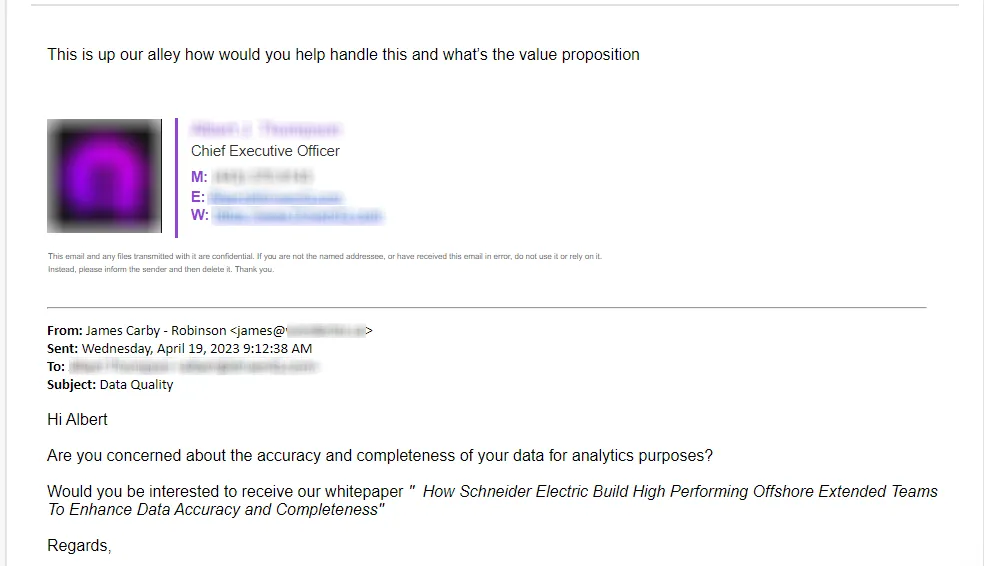
Figure 3 shows an example of a prospect becoming a lead after being offered top-of-the-funnel content to help solve their problems. This is another example of how Demand Generation can support Lead Generation. It’s important to note that this prospect is not necessarily ready for an immediate call with a salesperson, as they still require content + “thinking time”. They would have requested a call if they were ready for a call immediately.
What is demand generation?
Demand Generation is a strategic approach to generate interest and demand for a company’s products or services or to tune in and attract and increase pre-existing demand.
It revolves around creating awareness about the challenges faced by potential customers and positioning the company’s solution by guiding prospects through the correct thought processes.
Why is demand generation in B2B important?
In the B2B landscape, buyers are more informed and often conduct extensive research before purchasing. Demand Generation is pivotal in the overall growth strategy, as it allows companies to attract these discerning buyers without the constant need for direct outreach. Instead of heavily relying on outbound processes, which can be labor-intensive, businesses can craft content that resonates with their target audience. This content, strategically disseminated across various channels, acts as a beacon, drawing in potential buyers and guiding them through decision-making.
The true power of demand generation, mainly when bolstered by content marketing, lies in its scalability and efficiency. Once a company has honed its understanding of its target audience and has a robust lead generation mechanism, it can churn out content that educates and entices. This content, whether it’s an insightful blog post, an engaging video, an informative webinar, or a comprehensive e-book, can be repurposed and reused, offering an unparalleled return on investment. Unlike traditional marketing endeavors that might require repeated spending, a meticulously crafted piece of content can continue attracting and converting leads for years, requiring minimal additional effort.

Figure 1 shows the overall growth strategy and where demand generation is implemented. Demand generation is implemented after Phase 3; once new customers are signed up, companies must thoroughly interview them to extract their real-life experiences to have enough “marketing juice” to create content that drives demand.
Demand generation becomes indispensable in the B2B domain, where purchasing decisions are often protracted and involve multiple stakeholders. It ensures that potential buyers are always equipped with the requisite information to make an informed decision without constantly interacting with a company representative. By establishing your company as a thought leader and a reliable source of information, you pull in leads and nurture them, streamlining the subsequent sales process.
Lead Generation vs. Demand Generation
Lead generation uses outbound methods to find qualified prospects and turn them into leads. It requires “prospecting” to find “leads”, the same way people used to prospect in riverbeds to find gold. A prospect becomes a lead after demonstrating interest in your product or service.
Lead generation is typically more effective for capturing prospects in the lower parts of the funnel
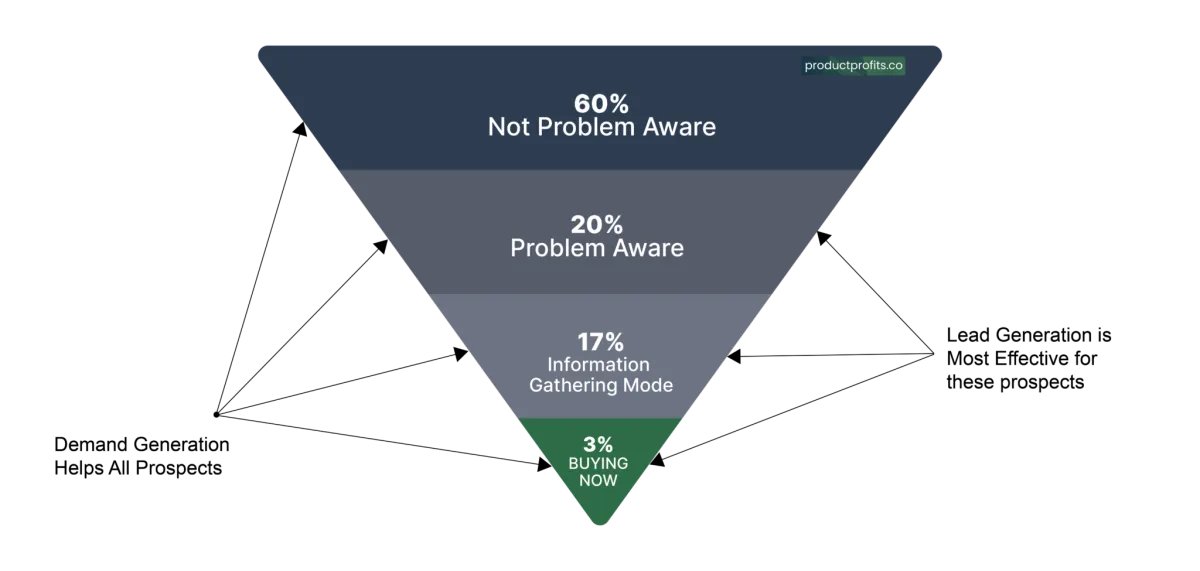
In Figure 2, you can see how lead generation is used to capture MOFU - BOFU prospects, while demand generation can capture any prospects.
Lead generation is the process of building a highly targeted list of prospects and converting them into leads.
Demand Generation vs. Lead Generation
Demand Generation is creating educational content that is openly available for prospects to consume to generate demand for the solution. It can be used to support lead generation as it allows cadences to provide TOFU nurture and lead generation can be used to support demand generation.
13 Benefits of a Successful Demand Generation Strategy
Prospecting involves searching for and identifying potential leads for a business’s products or services. It is the first step in the sales process and entails reaching out to potential prospects to gauge their interest and determine if they fit the company’s ideal customer profile. When you are prospecting, you are working throuBullet listgh a cold batch of prospects, searching for leads that align with the ideal customer profile.
Demand Generation Increases the Quality of Leads: When companies implement a thorough demand generation strategy, the quality of leads is generally higher. This is because prospects can consume enough information before deciding they are interested in a conversation.
Demand Generation Increases the Number of Leads: A thorough demand generation strategy can attract more potential customers.
Demand Generation Can Shorten the Sales Cycle: Having consumed valuable content, a well-informed prospect is often quicker to decide.
Demand Generation Boosts Organic Traffic: Garnering interest in your brand leads to increased site traffic, and with a solid product and compelling web copy, you’ll notice an uptick in organically generated leads.
Demand Generation Improves Customer Trust: Being an active voice in your industry conversations reminds your current customer base of your expertise and highlights your new product or service.
Positive Impact on Funnel Metrics: A successful demand generation strategy will have a positive effect on every metric throughout your funnel, including increased connection rates, exposure lead rates, show-up rates, and close rates.
Generates Inbound Enquiries: A well-executed strategy will naturally lead to more inquiries from interested prospects.
Identifies Viral Content Potential: Demand generation helps you figure out which types of content have the potential to go viral.
Tests Webinars and Content Funnels:** Before investing in Pay-Per-Click (PPC) campaigns, demand generation allows you to test the effectiveness of webinars and content funnels.
Empower SDRs with Fresh Content: Your Sales Development Representatives (SDRs) will continuously supply fresh content to engage potential clients.
Positions Your Company as an Industry Thought Leader: Regularly producing insightful content can position your company as the go-to expert in your industry.
Builds a Broad Following: Your consistent efforts in demand generation will help you create a broad and loyal fan base over time.
Provides Long-Term Nurturing Content: Your content will attract prospects and nurture them in the long run, keeping your brand top-of-mind.
With these benefits, it’s evident that demand generation is a pivotal strategy for B2B businesses aiming for sustainable growth.
What is the buyer's journey?
In its simplest form, the buyer’s journey is the stages your prospects go before purchasing. These can be identified as awareness, consideration, and decision in their simplest form.
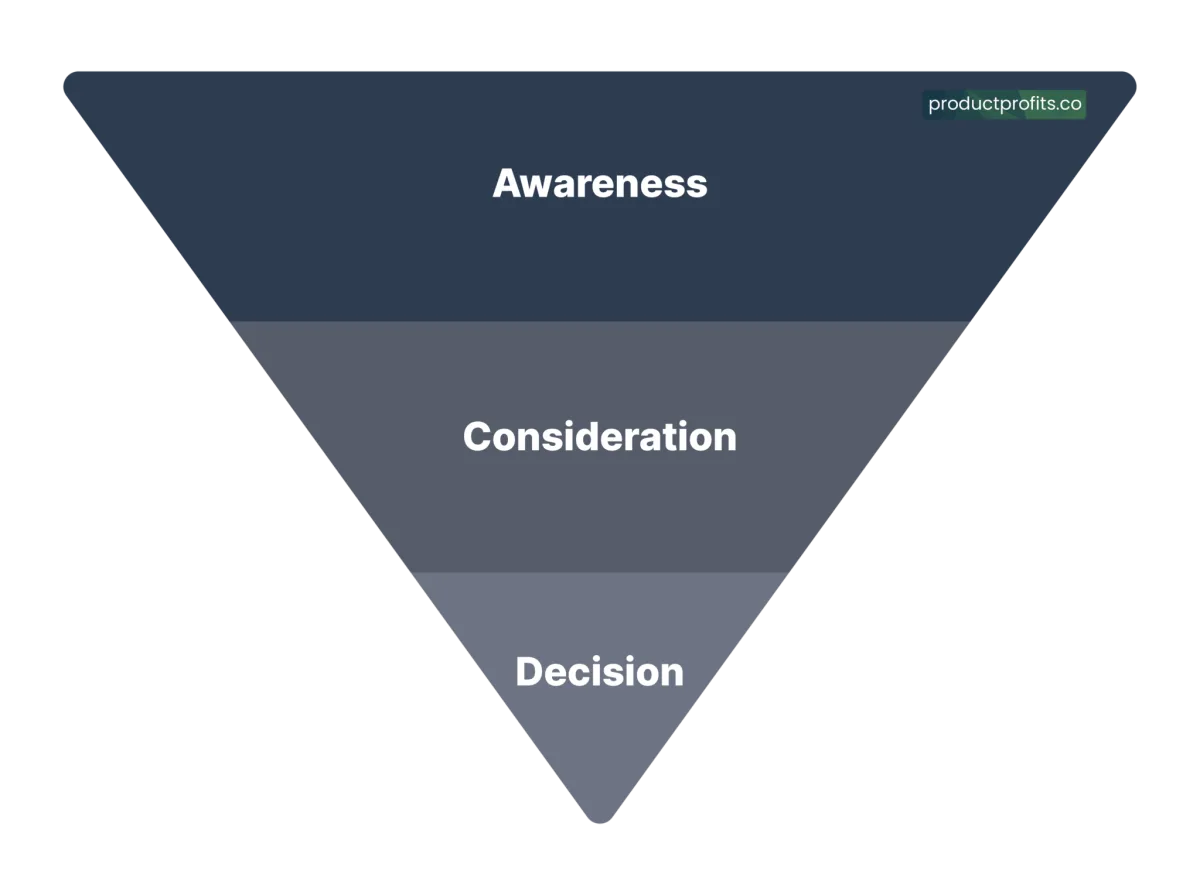
In Figure 3 we see the traditional buyer journey.
Awareness (Informational intent)
Most of your potential buyers will fall into this category. In this stage of the buyer’s journey, your buyer is becoming problem-aware.
Buyers do this by realizing their problem and how your service can solve it. Buyers are most likely entering search terms into Google to improve their understanding.
For example, As a cloud storage provider who solves the problem of data storage and backup for businesses, expect buyers to enter search terms like:
“Why is my company’s data storage inefficient?” or “How to improve data backup and retrieval?”
Your buyer seeks specific information to reach their goals in this phase of your buyer’s journey. It makes creating engaging content in articles, graphics, or videos all the more critical at this stage. You aim to offer your expertise on the problem and relate it to your product or service simultaneously. It will allow you to capture the attention of your target market, which is not immediately considering your solution but is becoming problem-aware
Consideration (informational intent)
This is the phase of the buyer’s journey where your buyer has fully realized that:
They have a problem;
There is a better way of moving forward;
They should consider the options to find the best solution.
In this phase of the buyer’s journey, your buyer will most likely enter search terms like “Should I use pesticides or pluck the weeds myself?”
However, understand that they’re not directly considering your service. They have a good idea that your product or service may be a route to achieving their goals.
This is also the phase where you might want to create informative content like a blog post or infographic titled: “The Top 10 Benefits of Using Pesticides vs. Plucking Weeds”.
Decision (Transactional intent)
In this third phase of the buyer’s journey, your buyer has decided on the best path forward but is now deciding which vendor to use. This is the home stretch of the purchasing process. The good news is that your buyers are considering companies with similar products or services and pricing. Simultaneously, they’re also reviewing each company’s reputation. This is where your content should stand out from the competition.
Buying is the combination of two different human activities: learning and deciding. We already know a lot about how humans learn. This includes how they apply that learning to make decisions and take action. It’s called the knowledge funnel or the buyer’s journey.
Here at Profitsprofits. co, we prefer to view the buyer’s journey like this.

In Figure 4, we observe the buyer's journey depicted by B2B Growth Implementation. This journey is integrated with market assumptions, allocating a specific percentage of your Total Addressable Market (TAM) to each stage of the buyer's journey. This integration allows for further segmentation of target niches and marketing efforts.
In Figure 4, we have broken the buyer’s journey into four categories.
Not problem aware (roughly 60% of your target market)
These people are unaware of the problem and may not fully understand the pain symptoms. Typically, your most significant niche segment will fit into this category, so we will assume that this is 60% of your market.
Pros to marketing to prospects who are not problem aware:
Advertising costs will be much cheaper as there is typically much less or no competition.
If you turn a prospect into a fan, brand loyalty will increase, as you were the first company to do so.
Cons to marketing to people not problem aware:
It requires more effort to educate and inform them about the problem.
The conversion rate might be lower since they might not see the immediate need for your solution.
Before introducing your solution, You must make them aware of the situation in longer sales cycles.
How to attract buyers who are not problem-aware:
Aspirational Headlines: These tap into the reader’s desires and dreams.
“Unlock a World of Endless Possibilities.”
“Discover the Secret to Living Your Best Life.”
Curiosity-Driven Headlines: These make the reader want to learn more.
“The One Thing You Didn’t Know You Were Missing.”
“Why Thousands Are Raving About This New Discovery.”
Benefit-Focused Headlines: Highlight a benefit without necessarily addressing a problem.
“Experience Ultimate Comfort and Style.”
“Elevate Your Everyday with This Simple Trick.”
Storytelling Headlines: Draw readers in with a narrative or personal story.
“How I Transformed My Mornings Without Changing My Routine.”
“The Journey from Ordinary to Extraordinary Starts Here.”
Statistical Headlines: Use surprising or impressive statistics to grab attention.
“Join the 5% of People Who Know This Secret.”
“90% Experienced a Positive Change After Trying This.”
Question-Based Headlines: Pose a question that resonates with the reader’s aspirations or curiosities.
“Ever Wondered What It’s Like to Live on Cloud Nine?”
“What If You Could Experience Luxury Every Day?
Challenge Headlines: Encourage readers to take on a challenge or try something new.
“Dare to Dive into a New Adventure.”
“Challenge Yourself to Discover Something New.”
Exclusive Headlines: Suggest that the reader will gain access to something exclusive or limited.
“Be Among the First to Experience This Revolution.”
“Get Exclusive Access to the Future of Innovation.”
Testimonial Headlines: Use quotes or testimonials that don’t necessarily address a problem but highlight a positive experience.
“‘It Changed My Life in Ways I Never Expected.'”
“‘I Never Knew I Needed This Until I Tried It.'”
Invitational Headlines: Invite readers to join a community or movement.
Problem-aware (roughly 20% of your target market, but it could be higher)
These individuals recognize their problems but might not know the solutions available. To attract these types of people, use problem-aware headlines and emphasize the weight of the pain your prospects are experiencing.
Pros to marketing to problem-aware prospects:
They are more likely to be receptive to your marketing messages since they actively seek a solution.
Faster sales cycles as they already know the problem and need the right solution.
Cons to marketing to problem-aware prospects:
Higher competition, as other businesses might also be targeting this segment.
They might have preconceived notions or biases about potential solutions, making it harder to convince them.
How to attract problem-aware buyers
Empathetic Headlines: Show understanding of the business’s challenges.
“Facing Challenges with Team Collaboration?”
“Struggling with Data Security Breaches?”
Direct Problem-Solution Headlines: Clearly state the problem and offer a solution.
“Enhance Team Productivity with Our Collaboration Tools.”
“Protect Your Data with Our Advanced Security Solutions.”
Question-Based Headlines: Pose a question that directly addresses the business challenge.
“Need a More Efficient Project Management System?”
“Looking for Scalable Cloud Storage Solutions?”
Challenge Headlines: Address the problem as a challenge.
“Ready to Streamline Your Supply Chain?”
“Optimize Your IT Infrastructure with Us.”
Statistical Headlines: Use data to highlight the magnitude of the problem.
“70% of Businesses Improved Efficiency with Our Software.”
“Join 90% of Companies Reducing Overhead Costs with Us.”
Information gathering mode (roughly 17% of your target market)
These prospects are aware of their problem and actively seeking information about solutions. They are still being prepared to buy but are in the process of evaluating their options.
Pros to marketing to prospects in information gathering mode:
They are more engaged and open to consuming content that educates them.
Opportunity to position your brand as a thought leader and trusted source of information.
Cons to marketing to prospects in information gathering mode
They might be overwhelmed with information and suffer from analysis paralysis.
Requires more nurturing and follow-up to convert them into buyers.
How to attract buyers who are in information-gathering mode
Educational Headlines: Offer valuable insights or industry knowledge.
“The Ultimate Guide to B2B Digital Transformation.”
“Top Considerations When Choosing a CRM System.”
Comparison Headlines: Compare different solutions or services.
“How Our ERP System Compares to Leading Competitors.”
“Top 5 B2B Marketing Strategies: A Comprehensive Analysis.”
Benefit-Focused Headlines: Highlight specific benefits of a solution.
“Boost ROI with Our Advanced Analytics Tools.”
“Enhance Team Collaboration with Our Unified Platform.”
Testimonial Headlines: Use real-life experiences to provide insights.
“‘Our Revenue Tripled in a Quarter!’ – A Client’s Success Story.”
“‘This Platform Revolutionized Our Operations.’ – CEO Testimonials.”
How-To Headlines: Provide actionable steps or industry insights.
“How to Implement a Successful B2B Sales Strategy.”
“Steps to Ensure GDPR Compliance in Your Business.
Buying now (roughly 3% of your target market)
These are the prospects who have done their research, evaluated their options, and are ready to make a purchase.
Pros to marketing to prospects who are buying now:
Highest conversion rates as they have a clear intent to purchase.
Shorter sales cycles since they’ve already made up their mind.
Cons to marketing to prospects who are buying now:
Intense competition as multiple vendors might be vying for their attention.
Price sensitivity might be higher as they could be comparing multiple offers.
How to attract B2B buyers who are looking to buy your product or solution right now
Urgency Headlines: Create a sense of urgency to encourage immediate action.
“Limited Time Offer! Upgrade Your IT Infrastructure Now.”
“Exclusive Webinar Seats Filling Fast. Reserve Yours!”
Promotional Headlines: Highlight discounts, deals, or bonuses for businesses.
“Get 20% Off Our Premium Business Suite – Offer Ends Soon!”
“Sign Up Now and Receive a Free Consultation.”
Reassurance Headlines: Address any last-minute concerns or objections.
“Trusted by Over 500 Leading Enterprises Worldwide.”
“Invest with Confidence: 30-Day Money-Back Guarantee.”
Exclusive Headlines: Offer something unique to businesses.
“Exclusive Enterprise Package for Our Loyal Clients.”
“Unlock Advanced Features with Our Corporate Plan.”
Call-to-Action Headlines: Directly prompt businesses to take a specific action
“Elevate Your Business Operations – Contact Us Today!”
“Ready for Seamless Integration? Request a Demo Now.”
How do you structure your sales funnel to best utilize buyers' journey knowledge?
Now, we must understand different types of content and how they are used in the sales funnel. Typically, you can find two types of intent behind content:
Informational Intent – Audience members consume content as part of their research or interests.
Transactional Intent – Audience members act to complete a transaction.
The following graphic highlights how these two types of intent work when you place them within the sales funnel.

In figure 5 we see how intent is used within the simple buyers journey. This image is credit to Rose & C Johnson in 2015 from the book “Experiences, the 7th Era of Marketing”
Content Archetypes
Each B2B post will likely fall into one of these four categories.

In figure 6 we see four different content archetypes as coined by Rose & C Johnson in 2015 from the book “Experiences, the 7th Era of Marketing”
These archetypes can be combined with how audiences consume content
Informational intent: Poet, Professor, and Preacher
Transactional intent: Promoter (and, at times, Preache
Where to place archetypes in the funnel
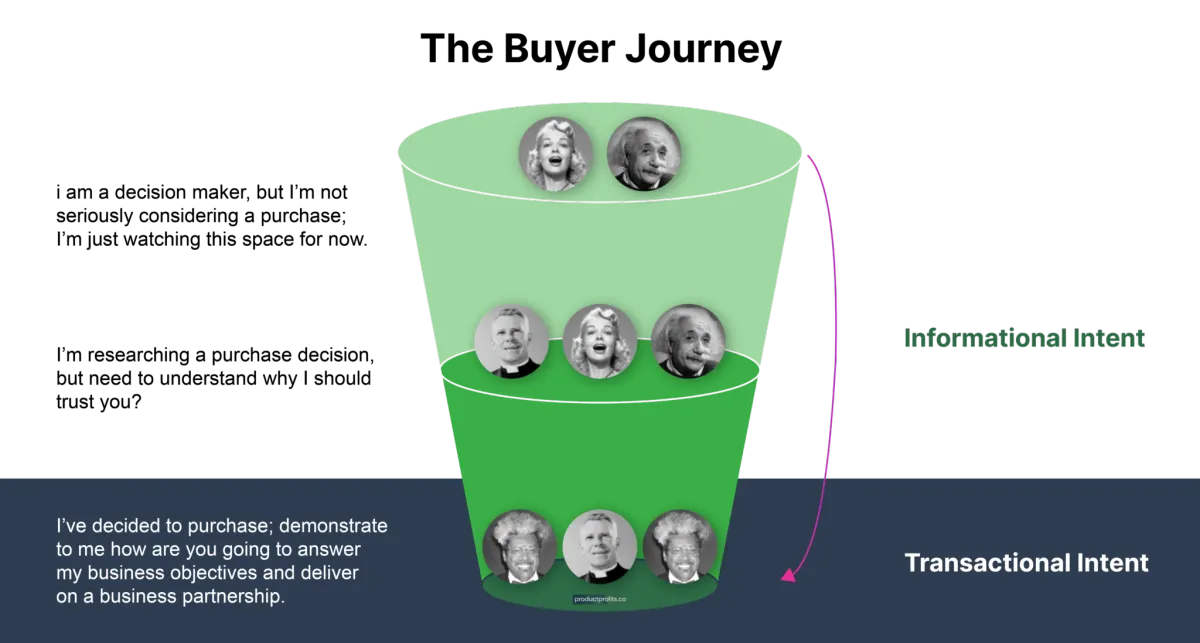
In figure 7, we see how archetypes are used within the sales funnel. Original source from Rose & C Johnson in 2015 in the book “Experiences, the 7th Era of Marketing”
These archetypes, rooted in the intent of the content, provide a framework for marketers to craft messages that resonate deeply with their audience. Let’s delve into these archetypes, focusing on informational and transactional intent.
Informational Intent: The Three Ps
When your audience seeks information, they’re looking to learn, be inspired, or be guided. This is where the three Ps come into play:
Poet :
Role: The storyteller.
Objective: To inspire and captivate.
Content Examples: Narratives, brand stories, and inspirational anecdotes.
Why It Works: Stories have always been a powerful medium to connect and engage. They evoke emotions, making the message memorable.
Professor
Role: The educator.
Objective: To inform and enlighten.
Content Examples: How-to guides, tutorials, and informative articles.
Why It Works: People are always looking to learn, and providing valuable information positions your brand as an authority in the field.
Preacher
Role: The motivator.
Objective: To persuade and influence.
Content Examples: Thought leadership articles, opinion pieces, and manifestos.
Why It Works: Sometimes, audiences need a push. A preacher’s content ignites passion and drives action.
Transactional Intent: The Promoter and the Preacher
When the audience’s intent is transactional, they want to make a decision, often a purchase. Here, the content should drive action:
Promoter:
Role: The salesperson.
Objective: To convince and convert.
Content Examples: Product descriptions, sales pitches, and promotional offers.
Why It Works: When someone is on the verge of a decision, the right promotional content can tip the scales in your favor.
Preacher (again):
Role: The advocate.
Objective: To endorse and advocate.
Content Examples: Testimonials, case studies, and reviews.
Why It Works: Sometimes, audiences need reassurance. Hearing positive experiences from others can be the final nudge they need.
In Conclusion
By understanding and leveraging these content archetypes based on the intent of the audience, marketers can craft messages that not only resonate but also drive desired actions. Whether you’re looking to inform, inspire, or influence, there’s an archetype to guide your content strategy.
How does Market Sophistication tie in to The Buyers Journey?
🔍 Understanding Market Sophistication
Market sophistication refers to how developed and competitive a given market or industry has become—across product maturity, consumer awareness, marketing complexity, and buyer expectations.
Why does this matter?
Because the more sophisticated the market, the more strategic your messaging must be.
Below, we break down the 5 levels of market sophistication so you can tailor your message to meet your prospect where they are
🧱 Level 1: No Competition (Category Creator)
You’re the first of your kind.
There’s no alternative for your solution—so you can speak broadly and boldly. But beware: without reference points, prospects won’t fully grasp your value. You’ll need to educate them while planting your flag.
“This is possible. Here’s why it matters.”
🧭 Level 2: Early Competition (Point of Difference)
Competitors have entered the space
You now need to explain how you’re different and why that difference matters. Positioning becomes essential.
“Unlike others, we do it this way. And here’s why it works.”
🏛 Level 3: Mature Competition (Proof + Precision)
Competitors are already making bold claims.
You’ll need to bring receipts. Specific proof, mechanisms, and outcomes are critical. Generic messaging dies here.
“We outperform because of XYZ—here’s the data.”
🧪 Level 4: Product-Centric Buyers
Prospects want experience , not promises.
They’ve heard it all before—and now want to see it work. Demos, trials, reviews, and tangible assets do the heavy lifting.
“Try it. Watch it. Decide for yourself.”
🧠 Level 5: Highly Informed Market
These buyers know the game. They’ve sat through every demo, tested every tool, and read every sales page. Now they’re choosing based on brand resonance experience and values alignment
Ironically, you circle back to softer human truths.
“You’ve seen the rest—here’s the one that gets you.”
🎯 Why This Matters
Most founders misfire because their message doesn’t match their market’s sophistication level.
What works for one stage will repel another.
It’s also why niching down gives you an edge:
You reduce competitive noise
You find prospects earlier in their awareness journey
You tailor messaging that hits harder, converts faster
Understanding where your market sits is one of the most powerful tools you can wield in copy, sales, and strategy.
How does the sales letter tie into demand generation?
In the world of B2B marketing, demand generation is the cornerstone of a successful sales strategy. But how does the age-old tactic of the sales letter fit into this modern landscape? Let’s dive in.
What is a sales letter?
A sales letter is a written communication to persuade a potential customer to purchase a product or service. It’s designed to capture the reader’s attention, build interest, overcome common objections and prompt action. In essence, a sales letter is a one-way conversation that presents an argument for why the reader should choose a particular product or service. The best sales letters can take prospects from TOFU to BOFU in one sitting.
Every company should have a sales letter, whether B2B or B2C. The sales letter ensures that everybody in the business is on the same page or “singing from the same hymn sheet”. Any changes in the product or service strategy or tactics should immediately be reflected in the master sales letter. A well-written sales letter will include all elements required for the core sales argument.
All content and assets are derived from the core sales letter such as the website, landing pages, sales decks, webinars, and email copy. We advise taking a top-down approach to launching a new offer. First, write the sales letter. Then, create the sales assets.
By breaking down the company’s offering into the elements required for the sales letter, companies will gain clarity on the weak parts of the offer or elements they are missing. Using the Productprofits sales letter framework, companies can create strong sales arguments that convert prospects from TOFU to BOFU.
History of sales letters
Sales letters have been around for centuries, long before the advent of digital marketing. They were the primary method businesses used to reach potential customers, especially when launching new products or services. In the pre-internet era, sales letters were often mailed to prospective clients or handed out in person. Customers would send their cheques along with a code so marketers could track which sales letters were effective and which weren’t. Over the centuries, a winning sales letter formula was developed.
“Seek wisdom from the old masters, for in their timeless lessons lie the secrets that the new often overlook.”
With the rise of email marketing, the sales letter transitioned to the digital realm, but its core principles remained the same.
Steps to Build Your B2B Demand Generation Strategy
Step #1 – Create a feedback loop from sales to product and marketing
The first step in building a successful B2B demand generation strategy is to create a feedback loop between sales, product, and marketing. The idea is to combine your goals across content creation and the core message and ensure it is relevant to “your” target audience. Meet with sales regularly to learn about their pipeline and challenges.
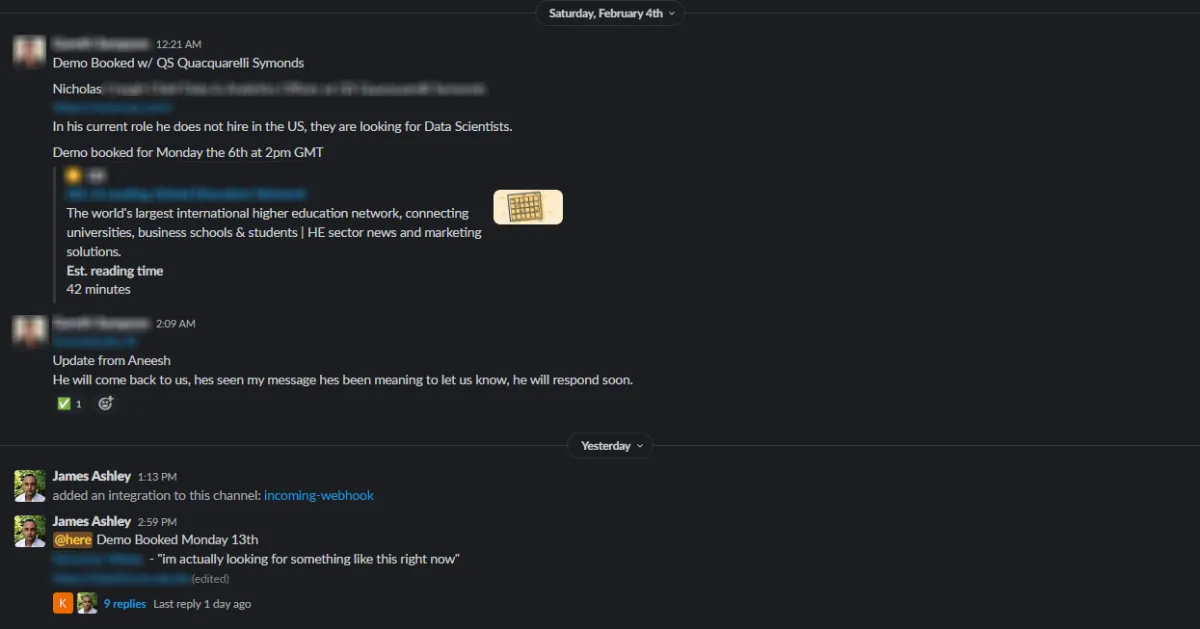
In figure 8 we see an example of all sales activity being recorded in slack in real time. All sales conversations should be automatically uploaded to a shared channel so the business can see what is happening on the front lines in real-time.
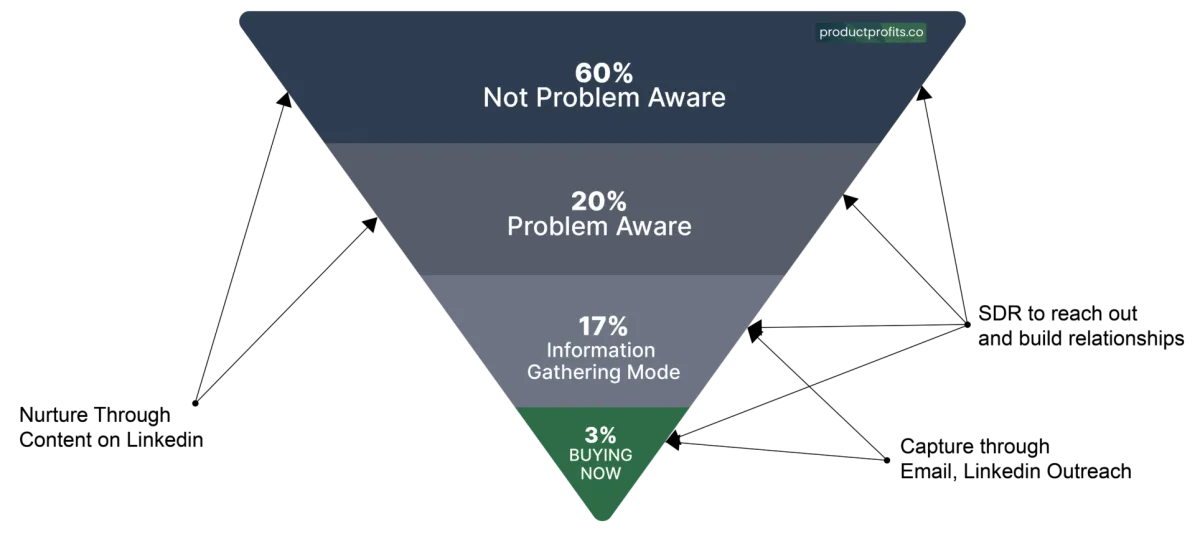
Figure 9 shows how you should position your sales and marketing approach
Step #2 - Segment Market Feedback into the Buyer Journey
Once you collect feedback from sales, products, and customers, it’s a matter of segmenting it into the buyer journey.
The buyer journey is divided into three stages: awareness, consideration, and decision. At the awareness stage, buyers are just starting to learn about their problem and the potential solutions. In review, buyers are evaluating different solutions and comparing vendors. At the decision phase, buyers are ready to buy.
Step #3 - Create a compelling thesis and Blackhole content
Once you understand the buyer journey, you can create a compelling thesis and black hole content. This content is precious to your target audience, and they don’t mind giving you their contact information in exchange for it. Typically, it is gated content like eBooks, whitepapers, and case studies.
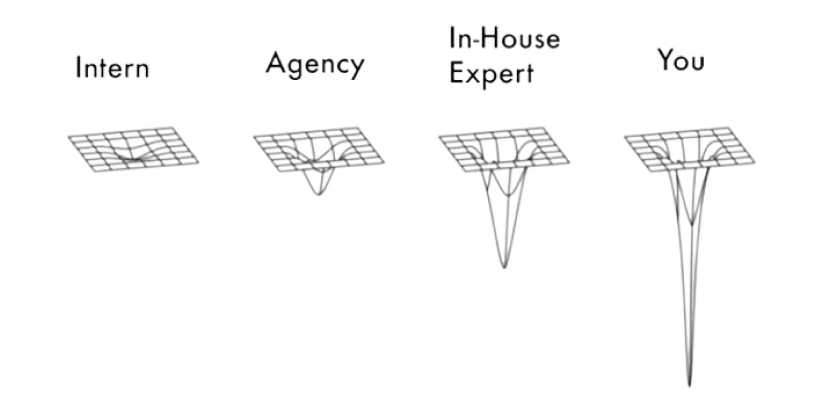
What is black hole content?
“Black Hole Content” stands out as a powerful gravitational force, attracting audiences and captivating their attention. Much like a cosmic black hole that draws everything into its center, black hole content is so compelling and valuable that it attracts readers, viewers, or listeners and keeps them engaged. It’s content that addresses the core needs, questions, and interests of its target audience, offering insights or solutions that are hard to find elsewhere. When executed correctly, black-hole content establishes a brand’s authority and expertise and creates a loyal following, turning casual visitors into dedicated fans and customers.
Step #4- Decide where content should be used at each step of the funnel
Once you create your black hole content, decide where to use it in your funnel to guide your target audience through their buying journey effectively. The growth marketer or strategist should determine this so you can equip your SDRs with the right content.
Step #5 - Build your content toolbox and empower your SDRs
After creating your content, you should build the content toolbox for the SDRs. Separate the content on where and why it should be used so your SDRs do not have to figure things out independently. SDRs will cherry pick from pre-templated emails and content to warm up prospects based on where the prospect is identified in their buyer’s journey.
Step #6 - Distribute your content using the 80/20 rule
After creating your content, you should build the content toolbox for the SDRs. Separate the content on where and why it should be used so your SDRs do not have to figure things out independently. SDRs will cherry pick from pre-templated emails and content to warm up prospects based on where the prospect is identified in their buyer’s journey.
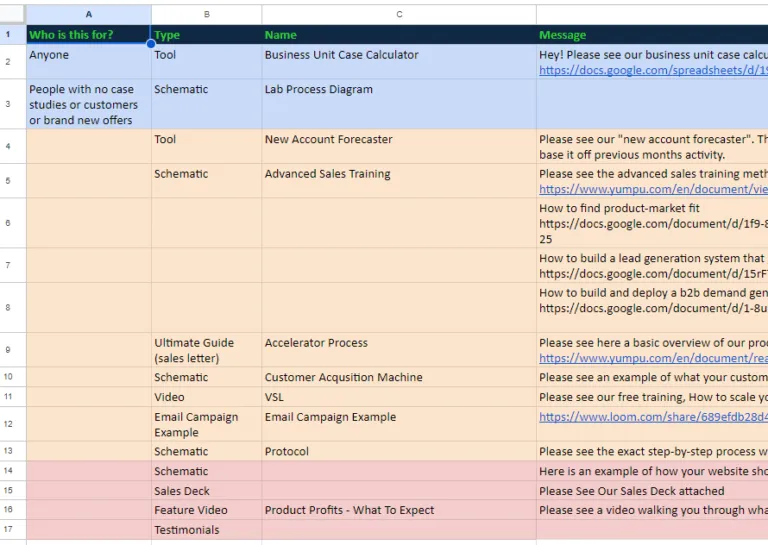
Figure 9 shows how you should position your sales and marketing approach
The Best Method for Launching a B2B Demand Generation Strategy in 2023
Launching a B2B Demand Generation strategy doesn’t have to be a daunting task.
With the right approach and mindset, it can be straightforward.
Option 1 - Hiring an Internal Team of Digital Marketers
Pros:
An internal team will deeply understand the company’s products, services, and brand ethos.
Greater control over the strategy and its execution.
Ability to train and mold the team according to specific company needs.
Cons:
Initial costs associated with hiring, training, and setting up the team.
Potential challenges in finding the right talent with the required expertise in demand generation.
Requires investment in tools, software, and other resources for the team.
The dynamic nature of demand generation might require continuous training and upskilling.
Option 2 - Work with B2B Growth
Pros:
Benefit from B2B Growth’ 15 years of sales and marketing experience tailored to demand generation.
A structured and comprehensive approach eliminates the need for trial and error.
Proven track record with a 100% success rate in implementing effective demand-generation strategies.
Flexible payment options, including a one-time payment or monthly fees.
An upfront investment ensures commitment and promises to deliver tangible results.
Cons:
Requires an initial financial commitment, which might be a consideration for some businesses.
Frequently Asked Questions (FAQs)
What is demand generation?
Demand generation is a strategic approach focused on generating interest and demand for a company’s products or services.
How does demand generation differ from lead generation?
While lead generation focuses on using outbound methods to find qualified prospects, demand generation revolves around creating educational content to generate demand for a solution.
Why is demand generation essential for B2B businesses?
It allows companies to attract informed buyers without constant direct outreach, leveraging content that resonates with their target audience.
What are the benefits of a successful demand-generation strategy?
Some benefits include increased quality and number of leads, shortened sales cycles, boosted organic traffic, improved customer trust, and a positive impact on funnel metrics.
How does the buyer's journey fit into demand generation?
The buyer’s journey, which includes stages like awareness, consideration, and decision, helps businesses tailor their content and strategies to guide potential customers through decision-making.
What are the different stages of the buyer's journey?
The stages include not problem aware, problem aware, information gathering mode, and buying now.
How do content archetypes fit into the sales funnel?
Content archetypes, such as Poet, Professor, Preacher, and Promoter, guide the creation of content based on the audience’s intent, ensuring messages resonate and drive desired actions.
What is a sales letter?
A sales letter is a written communication to persuade a potential customer to purchase a product or service.
How does the sales letter tie into demand generation?
The sales letter is a foundational document that ensures alignment across the business and can be used to derive various content assets for demand generation.
What are the critical components of a B2B demand generation strategy?
Components include outbound and content marketing channels and understanding the buyer’s journey.
What are the steps to build a B2B demand generation strategy?
Steps include creating a feedback loop, segmenting market feedback, creating compelling content, deciding content placement in the funnel, building a toolbox, and distributing content using the 80/20 rule.
What are the pros and cons of hiring an internal team of digital marketers vs. working with B2B Growth?
An internal team offers deep understanding and control but may have higher initial costs and talent challenges. Working with B2B Growth provides expertise, a structured approach, and a proven track record but requires an initial financial commitment.
What services do B2B Growth offer for demand generation?
B2B Growth offers guidance and mentorship, as well as a “Done With You” package that includes personalized sessions, sales call assistance, and marketing system setup.
How can businesses use content marketing effectively in their demand-generation strategy?
Businesses should master SEO, create evergreen content, craft compelling headlines, prioritize readability, engage with commenters, and offer value in exchange for emails.
What is the significance of the 80/20 rule in content distribution?
80% of content should provide value and engagement, while 20% should have a call to action, ensuring a balance between building equity and prompting action.
How do outbound marketing channels fit into demand generation?
Outbound demand generation uses outbound techniques to push a core message to the target audience, ensuring it reaches the right people.
What is the difference between informational and transactional intent in content?
Informational intent focuses on educating and informing the audience, while transactional plan aims to drive action or a purchase.
Why is the sales letter considered a cornerstone in B2B marketing?
The sales letter ensures alignment across the business, serves as a foundational document, and can be used to derive various content assets for demand generation.
How has the sales letter evolved?
Sales letters have transitioned from physical mailed letters to digital formats with the rise of email marketing, but their core principles of persuasion remain the same.
What are the two options for launching a demand generation strategy in 2024?
The two options are hiring an internal team of digital marketers or working with B2B Growth.
